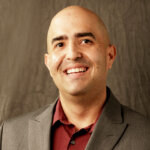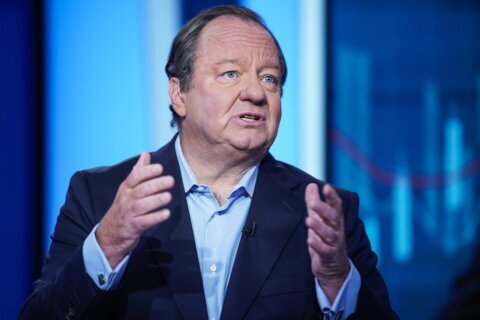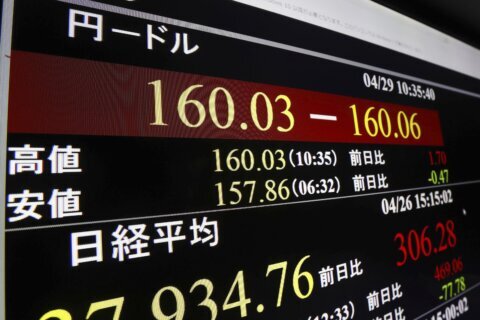It may be bad for borrowing money, but there’s a silver lining of interest rates going up for savers.
And if you have money sitting in a checking or savings account, not earning any interest, some financial experts say now may be the best time to consider moving it.
With interest rates rising, these experts say there are safer places to store that money, and actually see a return.
Certificates of Deposit (or CD), money market and standard savings accounts are seeing interest rates of more than 4%, with some surpassing 5%, according to current numbers from consumer financial services company Bankrate.
“Within the last couple of years, people are starting to look at some of these real safe, shorter-term options for their savings,” said Paul Ramming, an investment adviser at Foundry Capital Management.
Ramming said while he hesitates to call these accounts “an investment” or a “wealth building tool,” they are instead seen more as a place to park money for near-term expenses, such as a down payment on a house, new vehicle or an emergency savings fund.
“Today’s interest rate environment has drastically changed the way we think about where to place safe money,” said Barry Glassman, president of Glassman Wealth Services.
If you have money on the sidelines that isn’t getting at least 4% interest, Glassman recommends shopping around for an account offering a “more attractive yield.”
Savings accounts
The “plain vanilla” option is a savings account, according to Ramming. They are spots in which your money isn’t tied up like a CD or Money Market account, but because of that, they usually offer the lowest interest rates, with the national average yield at .58% APY, according to Bankrate.
Traditionally, the 10-year treasury is the benchmark banks follow for deciding on interest rates, Ramming said.
“Unfortunately, the yields on savings accounts have not gone up commensurate with the 10-year treasury,” he said.
There are online banks offering better rates, in some cases above 4% for high-yield savings accounts, according to Ramming, but those can come with higher fees and larger minimum deposits.
CD accounts
While some savings accounts are not lining up with the 10-year-treasury, Ramming said many CDs currently are.
“They’re closer, and in fact, exceeding the 10-year treasury because right now, shorter-term rates are actually yielding more than longer-term rates,” Ramming said.
With CDs, rates are locked in for a period of time. The typical durations are two, three and five years.
Money market accounts
Another conservative vehicle for your money is money market accounts.
“If you think about a mutual fund, where you know, that might be invested in a basket of stocks, money market accounts are similar to that, but they’re invested in a basket of very short-term, very safe securities,” Ramming said.
They do not mature like CDs, according to Ramming, so they require a little less maintenance and also do not come with fixed interest rates. The benefit, though, is you don’t lose your initial investment if rates drop. They also usually require higher initial investments than CDs and savings accounts, Ramming said. Some of these accounts are currently offering more than 4% in interest.
“They’ve adjusted … quicker than the traditional plain vanilla savings accounts at banks,” Ramming said.
College savings
For parents looking to save for their child’s college fund, Glassman said 529 accounts are worth considering. The accounts allow the money in them to grow tax-free, but it can only be used on tuition and other expenses connected to a college education.
“What I typically encourage, even with my well-to-do clients, is that they contribute somewhere around two-thirds to three-quarters of college savings in a 529 account,” Glassman said.
The remaining money can be funded with after-tax accounts, he said.
Glassman said all the 529 plans in the D.C. region are “pretty good,” but parents do have the option to open one in another state.
One nuance with the plan, according to Glassman, is that since the money grows tax-free, it is best to fund most of your child’s account early so that it has time to grow.
“There’s really not a big benefit to the growth of those assets once he or she turns 16 or 17 years old,” Glassman said.
Tips on saving
Ramming said when choosing a spot to grow your money, consider using the “rule of 72,” a formula which helps give you an idea on how long it will take for you to double your money: Number of Years to Double Investment = 72 ÷ Interest Rate (%).
For example, if an investment promises a 5% annual return, divide 72 by 5, which means it will take 14.4 years to double your investment.
Glassman said that when it comes to how much to invest, there is a rule of thumb that 10% of a person’s income should be saved. He did caution, however, that since everyone’s situation is different, that may not be the best plan for all.
Glassman also suggests tackling high-interest debt, such as credit card balances, before focusing on saving. The reason is the interest paid on that debt is, in many cases, seven to 22% each year.
“Paying down credit card debt may in fact be the best investment a person can make,” Glassman said.
Another recommendation from Glassman is to hire yourself for a day, sit down and look at bank and credit card statements. Study them and look closely at where your money is going, and where you can cut back.
“You don’t need a professional to put together a budget,” Glassman said.








